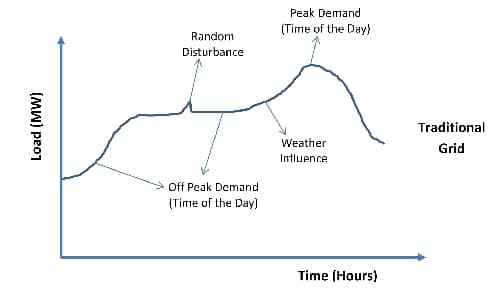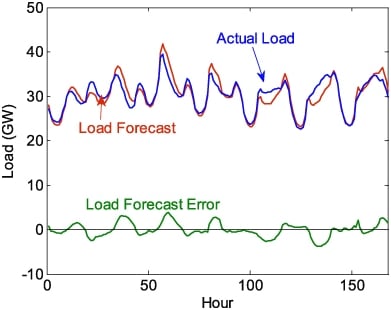Hello everybody, I am Steven Mill and at times I publish articles on the blog to feed this great community! Today, let me tell you about electric load forecasting…
Load forecasting is the predicting of electrical power required to meet the short term, medium term or long term demand. The forecasting helps the utility companies in their operation and management of the supply to their customers.
Electrical load forecasting is an important process that can increase the efficiency and revenues for the electrical generating and distribution companies. It helps them to plan on their capacity and operations in order to reliably supply all consumers with the required energy.

Factors that affect electrical power demand | image: energycentral.com
Advantages of load forecasting
- Enables the utility company to plan well since they have an understanding of the future consumption or load demand.
- Minimize the risks for the utility company. Understanding the future long term load helps the company to plan and make economically viable decisions in regard to future generation and transmission investments.
- Helps to determine the required resources such as fuels required to operate the generating plants as well as other resources that are needed to ensure uninterrupted and yet economical generation and distribution of the power to the consumers. This is important for short, medium, and long term planning.
- The load forecasting helps in planning the future in terms of the size, location and type of the future generating plant. By determining areas or regions with high or growing demand, the utilities will most likely generate the power near the load. This minimizes the transmission and distribution infrastructures as well as the associated losses.
- Helps in deciding and planning for maintenance of the power systems. By understanding the demand, the utility can know when to carry out the maintenance and ensure that it has the minimum impact on the consumers. For example, they may decide to do maintenance on residential areas during the day when most people are at work and demand is very low.
- Maximum utilization of power generating plants. The forecasting avoids under generation or over generation.
Challenges in load forecasting
-
Forecasting is based on expected conditions such as weather. Unfortunately, the weather is sometimes unpredictable and the forecasting may thus be different when the actual weather differs from expected.
In addition, different regions may experience different weather conditions which will definitely affect the electricity demand. This may have a negative impact on revenues, especially if the utility generates more to meet an expected high demand and then it turns out that the consumption is much less than what was generated either using expensive methods such as fossil fuel generators, etc.
- Most of the experienced utility forecasters use manual methods that rely on a thorough understanding of a wide range of contributing factors based on upcoming events or a particular dataset. Relying on the manual forecasting is not sustainable due to the increasing number and complexity of the forecasting. Utilities must therefore look for technologies that can accurately give results and eliminate problems that may occur if experienced forecasters retire or leave employment.
- The usage behavior varies between consumers using different types of meters and especially between the smart and traditional meters as well as different tariffs. The utility must understand this and develop separate forecast model for each of the metering systems and then add them up for the final forecast value. Otherwise, they will get an inaccurate forecasting.
- Difficulties getting accurate data on consumption behavior due to changes in factors such as pricing and the corresponding demand based on such a price change.
- Load forecasting task is difficult due to the complex nature of loads which may vary depending on the seasons and the total consumption for two similar seasons may vary.
- It is sometimes difficult to accurately fit the numerous complex factors that affect demand for electricity into the forecasting models. In addition, it may not be easy to obtain an accurate demand forecast based on parameters such as change in temperature, humidity, and other factors that influence consumption.
- The utility may suffer losses if they do not understand and decide on an acceptable margin of error in short term load forecasting.

Typical load forecast error plot | image: cdn.iopscience.com
Conclusion
The load forecasting has both commercial and technical implications and if not done properly, it may lead to bad planning and inefficient operation of the electrical power systems.
The accuracy of the load forecasting is important to both the utility companies as well as the consumers. For this reason, it may be necessary to keep on adjusting based on seasons and other factors that may affect the way consumers use the power. In addition, the forecast should rely on accurate data and best forecasting practices.
Stevn Mill.
Do you have more advantages or challenges to add? Please share your comments below.